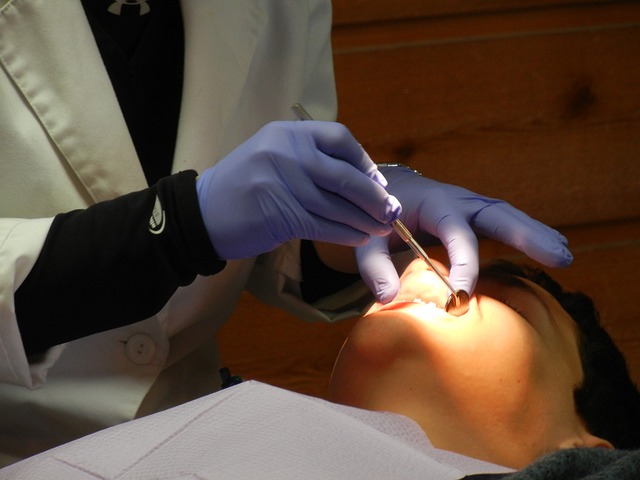1. Invisalign or Traditional Metal Braces?
In recent years, orthodontic treatments have witnessed a remarkable shift, with Invisalign gaining popularity as a revolutionary alternative to traditional metal braces. The advent of Invisalign has transformed the way people perceive orthodontic care, providing a discreet and comfortable solution to correct misaligned teeth. As more individuals seek a more convenient and aesthetically appealing orthodontic option, the demand for Invisalign continues to grow.
In this blog post, we will explore an essential aspect of orthodontic treatment: the cost comparison between Invisalign and traditional metal braces. While both treatments aim to achieve a beautifully aligned smile and improved dental health, understanding the financial aspects can help readers make an informed decision that suits their budget and specific dental needs.
Invisalign as An Alternative to Metal Braces
Invisalign has emerged as a preferred choice for those seeking a subtle and convenient solution to address teeth misalignment. Its popularity can be attributed to the clear aligners’ transparent appearance, which discreetly corrects dental issues without the prominent visibility of metal brackets and wires. Additionally, the comfort and ease of wearing Invisalign aligners appeal to both adults and teenagers, making it a top choice for orthodontic treatment.
The Purpose of This Blog Post
As more individuals consider orthodontic treatment options, the financial aspect becomes a crucial factor in the decision-making process. While Invisalign’s advantages are evident, the cost comparison between Invisalign and metal braces plays a significant role in determining the most suitable treatment for each individual. Through a detailed analysis of the expenses involved in both treatments, we aim to shed light on the cost differences, helping readers gain a comprehensive understanding of which option aligns with their budget and personal preferences.
Join us in the following sections as we delve into the specifics of Invisalign and traditional metal braces’ costs, exploring the benefits and considerations associated with each option. By the end of this blog post, we hope to equip you with valuable insights to make an educated decision on your orthodontic journey towards achieving a beautiful and healthy smile.
2. Simple Answer to the Question: How Much Cheaper Is Invisalign?
On average, traditional metal braces in North America can cost anywhere from $2,500 to $7,000 or more. Invisalign treatment, on the other hand, typically ranges from $3,000 to $8,000 or higher.
Please note…
It’s essential to keep in mind that these figures are rough estimates and can vary widely. The best way to determine the exact cost for your specific case is to consult with an orthodontist or Invisalign provider. They will assess your orthodontic needs and provide you with a more accurate cost estimate tailored to your unique situation. Additionally, some dental insurance plans may provide partial coverage for orthodontic treatments, which can help offset the cost.

3. Understanding Invisalign and Metal Braces
What is Invisalign?
Invisalign is an innovative teeth straightening option that employs clear aligners to gradually shift teeth into their desired positions. These custom-made aligners are crafted using advanced 3D technology to ensure a precise and comfortable fit. Unlike traditional metal braces, Invisalign aligners are virtually invisible, offering a discreet way to correct dental misalignments.
Patients receive a series of aligners, and each set is worn for approximately two weeks before moving on to the next set. The gradual progression of aligners helps achieve the desired results over time. Invisalign aligners are removable, allowing for easy maintenance of oral hygiene and the freedom to enjoy your favorite foods without restrictions.
What are Traditional Metal Braces?
Traditional metal braces have been a reliable and time-tested orthodontic treatment for many years. They consist of metal brackets affixed to the teeth and connected by archwires. The orthodontist tightens the wires at regular intervals to exert gentle pressure on the teeth, gradually guiding them into proper alignment. While metal braces are highly effective, they are more noticeable compared to Invisalign due to their conspicuous appearance.
Additionally, metal braces may cause mild discomfort and potential irritation to the cheeks and lips, especially during the initial adjustment period.
Suitability for Different Orthodontic Issues
Both Invisalign and traditional metal braces can address a wide range of orthodontic issues, including overcrowding, gaps between teeth, and bite irregularities (overbite, underbite, and crossbite). Invisalign aligners are particularly effective in treating mild to moderate cases of misalignment.
They are suitable for individuals who prefer a less visible and more convenient treatment option. However, severe cases of malocclusion may require traditional metal braces, which provide more control over complex tooth movements.
In some situations, a combination of Invisalign and metal braces, known as a “mixed treatment approach,” may be recommended. This approach leverages the strengths of both methods to achieve optimal results for more challenging orthodontic cases.
4. Common Cost-Related Questions About Invisalign and Braces Prices
When it comes to orthodontic treatment, cost is a common concern. Understanding the financial aspect of treatments like Invisalign and braces is crucial for making an informed decision about your oral health.
- Factors influencing prices
- Potential insurance coverage
- Available payment plans at your orthodontic office
Questions often revolve around factors influencing prices, potential insurance coverage, and available payment plans. It’s essential to consult with an orthodontist who can provide a detailed breakdown of costs specific to your case.
Are there any Cheap Alternatives to Braces and Invisalign?
While Invisalign and braces are highly effective orthodontic treatments, there are alternative options that may be more budget-friendly.
For instance, some people explore options like clear aligner alternatives such as SmileDirectClub, Byte, Candid, and ClearCorrect, which might have a lower overall cost.
Additionally, discussing with your orthodontist about different treatment plans or payment options can help find a solution that fits your budget.
Read More about Alternatives to Invisalign
Which Will Work Best For Me – Braces or Invisalign?
Deciding between braces and Invisalign depends on various factors. The severity of your orthodontic issues, your lifestyle, aesthetic preferences, and budget all play a role.
Braces are highly effective for complex cases, while Invisalign offers a more discreet option. Consulting with an orthodontist is crucial for determining which treatment aligns best with your specific needs.
Comparing Costs of Invisalign vs. Regular Braces
The costs associated with Invisalign and traditional braces can vary depending on factors like treatment duration, complexity, and location. Invisalign tends to be more expensive due to its advanced technology and convenience.
However, for certain cases, braces might be the more cost-effective option. Discussing your specific needs with an orthodontist will provide a clearer picture of the associated costs.
Is Invisalign Faster than Braces?
In some cases, Invisalign may lead to shorter treatment times compared to traditional braces.
The exact duration of treatment depends on factors such as the complexity of your case and how well you adhere to treatment guidelines. Consulting with an orthodontist will give you a more accurate estimate based on your specific circumstances.
Is Invisalign as Good as Braces?
Both Invisalign and braces are highly effective at straightening teeth and correcting bite issues. The choice between them often comes down to personal preference and specific orthodontic needs.
Invisalign offers advantages in terms of aesthetics and convenience, while braces are incredibly effective for complex cases.
Are Braces More Expensive Than Invisalign?
The cost of braces and Invisalign can vary widely depending on factors like location, the complexity of your case, and the treatment duration.
Generally, Invisalign tends to be slightly more expensive due to its advanced technology and convenience. However, for some individuals, braces might be the more cost-effective option. Please read through this post to found out what can influence the total cost of your orthodontic plan and what the pros and cons are for each option.
It’s essential to consult with an orthodontist for a detailed cost breakdown based on your unique situation.
5. Factors Affecting the Cost: What You Should Know
Factors Influencing the Cost of Invisalign
a) Complexity of the Case: The complexity of your orthodontic issues plays a significant role in determining the cost of Invisalign treatment. More severe misalignments or bite irregularities may require additional aligners and adjustments, leading to higher costs.
b) Number of Aligners Required: Invisalign treatment involves a series of custom-made aligners that are specifically designed to address your unique dental needs. The more aligners needed to achieve the desired results, the higher the overall cost of the treatment.
c) Orthodontic Office Location: The cost of living and the average dental fees in your area can influence the overall price of Invisalign treatment. Orthodontic offices in urban areas or regions with higher living costs may have slightly higher fees.
d) Dentist’s Expertise and Experience: The experience and reputation of your dentist or orthodontist can also impact the cost of Invisalign treatment. Highly experienced professionals may charge more for their services.
Factors Affecting the Cost of Traditional Metal Braces
a) Type of Brackets: Traditional metal braces come in various options, including stainless steel, ceramic, or self-ligating brackets. Ceramic brackets, which are less noticeable, may be more expensive than standard stainless steel brackets.
b) Additional Appliances: In some cases, additional appliances such as headgear or palatal expanders may be required to address specific orthodontic issues. The inclusion of these appliances can affect the overall cost of traditional metal braces.
c) Complexity of the Case: Similar to Invisalign, the severity of your orthodontic problems will impact the duration of treatment and the number of adjustments required, influencing the final cost.
d) Orthodontist’s Fees: The fees charged by the orthodontist for their expertise and services will vary based on their experience and reputation in the field.

6. Average Cost of Invisalign: Estimated Range
Estimated Range of Average Cost
The cost of Invisalign treatment can vary depending on several factors, including the complexity of your case and your geographic location. On average, the cost of Invisalign treatment in North America typically falls within the range of $3,000 to $8,000. Keep in mind that this is an estimated range, and the actual cost may differ based on individual circumstances.
Additional Costs and Hidden Fees
While the estimated cost of Invisalign treatment provides a general idea, it’s essential to be aware of potential additional costs and hidden fees that may arise during the process. These costs can include:
a) Initial Consultation: Some orthodontic offices charge a fee for the initial consultation, during which the orthodontist will assess your dental needs and create a treatment plan.
b) X-rays and Scans: Depending on your case, you may require X-rays, dental scans, or impressions, which could incur extra charges.
c) Retainers: After completing your Invisalign treatment, retainers are necessary to maintain the results. The cost of retainers may vary, so it’s crucial to discuss this with your orthodontist.
d) Adjustments and Refinements: In some instances, additional adjustments or refinements may be needed to achieve the desired results, which can lead to additional costs.
e) Dental Insurance Coverage: While many dental insurance plans offer coverage for orthodontic treatment, the extent of coverage may vary. Check with your insurance provider to understand what is covered and what may require out-of-pocket expenses.
f) Post-Treatment Care: Invisalign treatment requires follow-up care and regular check-ups to monitor progress and ensure the best results. These visits may involve additional fees.
It’s essential to have open and transparent communication with your orthodontist about the total cost of your Invisalign treatment, including any potential additional expenses. Many orthodontic offices offer payment plans or financing options to help make treatment more affordable for patients. By discussing all costs upfront and understanding your financial options, you can embark on your Invisalign journey with confidence and a clear understanding of the investment required for your beautiful, aligned smile.
Read More about Invisalign Cost in Canada
7. Average Cost of Metal Braces
Estimated Range of Average Cost
The cost of traditional metal braces can vary depending on several factors, such as the severity of your orthodontic issues and the location of your orthodontist. On average, the cost of traditional metal braces in North America typically falls within the range of $2,500 to $7,000. Keep in mind that this is an estimated range, and the actual cost may differ based on individual needs and treatment duration.
Additional Costs and Hidden Fees
While the estimated cost of traditional metal braces provides a general idea, it’s essential to be aware of possible additional costs and hidden fees that may come with the treatment. These costs can include:
a) Initial Consultation: Some orthodontic offices may charge a fee for the initial consultation, during which the orthodontist will evaluate your dental needs and create a treatment plan.
b) X-rays and Dental Impressions: Before initiating treatment, you may need X-rays, dental impressions, or other diagnostic tests, which could result in additional charges.
c) Brackets and Wires: The cost of traditional metal braces covers the brackets and wires used to align your teeth. However, in some cases, there may be extra charges for specific types of brackets or customized wires.
d) Retainers: After completing the active phase of braces treatment, you will need to wear retainers to maintain the results. The cost of retainers may be separate from the braces treatment.
e) Adjustments and Follow-up Visits: Regular adjustments and follow-up visits with your orthodontist are necessary throughout the treatment process. These visits may involve additional fees.
f) Dental Insurance Coverage: Many dental insurance plans offer coverage for orthodontic treatment, including traditional metal braces. However, it’s essential to review your insurance policy to understand the extent of coverage and any out-of-pocket expenses.
8. Comparison of Costs (Table)
| Aspect | Invisalign | Traditional Metal Braces |
|---|---|---|
| Average Cost | $3,000 – $8,000 | $2,500 – $7,000 |
| Type of Treatment | Clear aligners | Metal brackets and wires |
| Visibility | Virtually invisible | Noticeable appearance |
| Treatment Duration | Varies (6 – 18 months) | Varies (12 – 36 months) |
| Complexity of Treatment | Suitable for mild to moderate orthodontic issues | Suitable for various issues |
| Additional Expenses | – Initial consultation | – Initial consultation |
| – X-rays and dental impressions | – X-rays and dental impressions | |
| – Additional aligners for refinements | – Different types of brackets | |
| – Retainers for post-treatment maintenance | – Retainers after treatment completion | |
| Dental Insurance | May have partial coverage, depending on plan | May have partial coverage, depending on plan |
| Overall Cost | The overall cost may be higher or lower depending on individual needs and treatment duration | The overall cost may be higher or lower depending on individual needs and treatment duration |

9. Benefits of Invisalign vs. Metal Braces
Advantages of Invisalign
- Aesthetic Appeal: One of the most significant advantages of Invisalign is its aesthetic appeal. The clear aligners are virtually invisible when worn, making them a discreet option for teeth straightening. This is particularly appealing to teenagers and adults who may feel self-conscious about wearing traditional metal braces.
- Removability: Invisalign aligners are removable, allowing patients to take them out while eating, drinking, and brushing their teeth. This means there are no dietary restrictions, and maintaining good oral hygiene is more manageable compared to metal braces, where food particles can get trapped around the brackets and wires.
- Comfort: Invisalign aligners are custom-made to fit comfortably over the teeth, reducing the risk of irritation and discomfort often associated with traditional braces. There are no sharp brackets or wires that can cause abrasions inside the mouth.
- Convenience: Invisalign treatment requires fewer office visits compared to metal braces. Patients typically receive several sets of aligners at once and change them at home every two weeks. This can be beneficial for individuals with busy schedules or those living in remote areas with limited access to orthodontic offices.
Advantages of Traditional Metal Braces
- Effective for Severe Bite Issues: Metal braces are highly effective in treating more severe orthodontic cases, including complex bite issues like severe underbites, overbites, and crossbites. The fixed nature of metal braces allows orthodontists to exert precise control over the teeth and jaw movement.
- Versatility: Metal braces are versatile and can address a wide range of orthodontic problems, from simple tooth misalignments to more complex bite abnormalities. They can be used for patients of all ages and are often a reliable choice for comprehensive orthodontic treatment.
- Predictable Results: Metal braces have been used in orthodontic treatment for many years, and their effectiveness is well-established. Orthodontists have extensive experience with metal braces, and they can predict the treatment outcome with a high degree of accuracy.
- Cost-Effectiveness: In some cases, metal braces may be more cost-effective than Invisalign, especially for patients with severe orthodontic issues. Metal braces tend to have a lower average cost than Invisalign, making them a more budget-friendly option for some individuals.
10. Factors to Consider in Decision Making
When considering orthodontic treatment, it’s essential to weigh the cost and benefits of Invisalign and metal braces based on your individual needs and preferences. Here are some factors to consider to help you make an informed decision:
- Treatment Complexity: Assess the severity of your orthodontic issues. Invisalign is an excellent option for mild to moderate cases, including crowded or slightly misaligned teeth. However, for more complex bite problems or severe misalignments, traditional metal braces may be more effective in achieving the desired results.
- Aesthetic Preference: Consider your aesthetic preferences and lifestyle. If having discreet and nearly invisible orthodontic treatment is crucial to you, Invisalign might be the better choice. On the other hand, if aesthetics are less of a concern and you prioritize treatment effectiveness, metal braces might be the way to go.
- Comfort and Convenience: Think about your comfort level with each treatment option. Invisalign aligners are more comfortable and less likely to cause irritation or discomfort compared to metal braces. Additionally, their removability allows for easier eating and oral hygiene maintenance. If convenience and comfort are vital to you, Invisalign might be the preferred choice.
- Treatment Duration: Consider the estimated treatment duration for each option. Invisalign treatment can be faster than traditional braces in some cases. If you desire a shorter treatment time, Invisalign might be more suitable for your needs.
- Budget and Cost: Evaluate your budget and financial considerations. In some cases, metal braces may have a lower average cost compared to Invisalign. However, costs can vary based on individual cases, location, and orthodontic provider. Discussing payment plans and insurance coverage with your orthodontist can help you determine the most affordable option for your situation.
In the end, the best way to figure out which option is perfect for your orthodontic needs is to talk to an experienced orthodontist. They’ll take a close look at your oral health, have a chat about your goals, and suggest the treatment that suits you best based on their expertise. An orthodontist can give you personalized insights and steer you toward the ideal choice to achieve that stunning and healthy smile you’ve always wanted. So don’t hesitate to schedule that appointment and get on the path to a confident and radiant grin!



